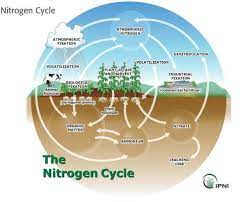Why is Nitrogen a Problem in Farming?

Curtains for the home are the right choice
June 15, 2023
The Best Leather Gift Ideas For Him
June 16, 2023Nitrogen is important for crops, but it is tricky to work with. It’s essential for achieving high yields, but excess nitrogen pollutes the environment in a number of ways. When you need Nutrient Management Planning, go to a site like 4rreassurance.co.uk/nutrient-management-planning/

The primary problem with nitrogen comes from the use of synthetic nitrogen fertilisers made from fossil fuels. The compounds contribute to climate change, partly down to the fact that they emit nitrous oxide, a strong polluter. Contamination of water supplies is also a big problem, resulting in too much nitrogen or nitrates in rivers and lakes. And they leak from farms into the soil, where it can become a nutrient ‘dead zone’ or be released as nitric acid that can kill plants and corrode metals.
But there are alternatives to these toxic chemical inputs. Scientists are experimenting with modified grain crops that host symbiotic bacteria in their roots, which can fix nitrogen from the air. They’re also looking at ways to signal these bacteria to produce the right amounts of nitrogen for plant growth.

In addition, soil health assessments, disease monitoring and precision cropping techniques can help farmers know exactly how much extra nitrogen their fields need. And they can avoid wasting any nitrogen inputs by making sure that the amount of extra nitrogen that they add doesn’t exceed the plant’s ability to absorb it.
The good news is that nitrogen use efficiency measures how efficiently crops get the nutrients they need from their soil – and this has been improving in most countries.
Warning: Trying to access array offset on value of type null in /home/speakyma/public_html/checkyourhud.com/wp-content/themes/betheme/includes/content-single.php on line 286



